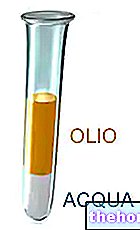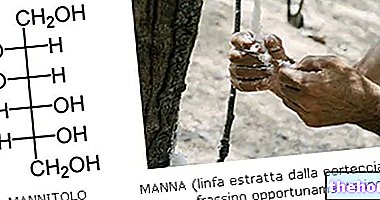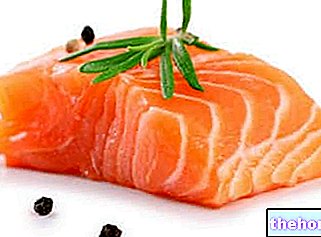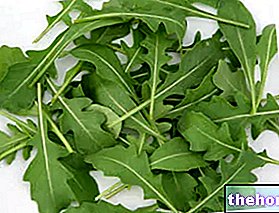
It is therefore no coincidence that various companies operating in the food sector, especially dietary or light foods, are progressively adapting the formulation of their products by choosing isomaltulose to replace other sweeteners (both caloric and acaloric).
Below we will try to better understand if the use of isomaltulose can actually be considered beneficial from a nutritional and health point of view.
composed of glucose and fructose monosaccharides, linked by an alpha-1,6-glycosidic bond.Naturally present in honey and sugar cane extracts, isomaltulose tastes "similar" to sucrose, but with half the sweetening power.
On an industrial level, isomaltulose is synthesized by enzymatic rearrangement (isomerization) of the sucrose extracted from beet.
The necessary enzyme was discovered in Germany in 1950, a period after which studies on its properties began.
In Japan it has been used as an alternative to sugar since 1985. In the European Union since 2005, in the United States since 2006 and in Australia and New Zealand since 2007.
The analytical methods for the characterization and assay of commercial isomaltulose are well established by standard compendia such as the "Food Chemicals Codex'.
Isomaltulose can also be hydrogenated to produce isomalt, a partially digestible carbohydrate that is used as a sweetener in low-sugar candy and confectionery.
Like sucrose, isomaltulose can be digested by hydrolysis into glucose and fructose.
However, while in sucrose glucose is bonded to the anomeric carbon of fructose (an α-1,2 bond), in isomaltulose the bond is to carbon 6 (α-1,6). This characteristic makes it a reducing sugar.
Note: The fructose of isomaltulose has a circular structure that opens to show the carbonyl group - just like in ketones and aldehydes.
Compared to sucrose and most other carbohydrates, isomaltulose does not represent a significant substrate for oral bacteria, which struggle to generate the acids responsible for tooth decay.
of sucrose: 3.75 kilocalories per gram (kcal / g) - or 4, depending on the source.
Its sweetening power is 45-50% compared to that of sucrose.
In food preparation and processing, isomaltulose and sucrose show similar characteristics, which suggests that they can be used interchangeably.
Isomaltulose is an available carbohydrate
Isomaltulose is an available carbohydrate, just like sucrose and most other mono-, oligosaccharides and maltodextrins; it is therefore completely digested and absorbed in the small intestine and does not enter the large intestine, nor is it excreted in the urine.
After oral intake, isomaltulose is digested by the isomaltase enzyme found on the brush border of the intestinal mucosa of the small intestine. This enzyme is otherwise involved in the digestion of the α-1,6 bonds present in starch.
The digestive products of isomaltulose are glucose and fructose, which are absorbed and enter the bloodstream, following the normal metabolic pathways.
While fructose is mainly converted into glucose to be channeled into hepatic glycogen stores, glucose is distributed through the circulatory system to different parts of the body where it can be oxidized or stored as muscle glycogen.
Insulinotropic and glucose-dependent polypeptide (GIP) is secreted from the earliest (proximal) part of the small intestine, in lower amounts for isomaltulose than for sucrose.Compared to sucrose, the absorption of monosaccharides starting from isomaltulose is more prolonged. The response curve of the blood glucose concentration is therefore less elevated and longer.
Reduction in blood glucose and insulin response
The concentrations of glucose in the blood and insulin after ingestion of isomaltulose are lower than those after ingestion of sucrose or glucose, giving isomaltulose a glycemic index (GI) of 32.
"Isomaltulose is a carbohydrate with a low glycemic index (GI <55), especially when compared to the value of 67 for sucrose and 100 for glucose - data provided by"University of Sydney.
Confirmation of this low glycemic response is provided by numerous studies for different population groups, including: healthy people, overweight or obese people, prediabetic people and patients with type 1 and type 2 diabetes.
All these studies show a lower glycemic response than isomaltulose and, where tested, also show a reduction in the insulin response in the blood.
A significant role has been established for the incretin hormone GLP-1, which as we have said is secreted in response to the distal absorption of isomaltulose by limiting the increase in blood glucose concentration after a meal.
Following the publication of a positive opinion of the "European Food Safety Authority", an" indication corresponding to the low glycemic response of isomaltulose and its potential to reduce the glycemic response to foods in case of substitution of other sugars has been approved in the EU legislation.
In the long term, when following a diet with normal levels of carbohydrates, avoiding high concentrations of glucose and insulin in the blood is a useful measure for the prevention and management of diabetes mellitus, cardiovascular diseases and possibly overweight and obesity, as the "International Carbohydrate Quality Consortium'.
Continuous monitoring of glycemic concentration within 24 hours after taking isomaltulose in place of sucrose indicates a reduction in the glycemic profile.
The use of isomaltulose in place of sucrose and other carbohydrates allows the production of foods with a lower GI.
Several studies provide evidence of improvements in both glycemic control and lipid metabolism, in diabetic and non-diabetic subjects, following the regular consumption of isomaltulose compared to other carbohydrates such as sucrose, maltodextrin or glucose.
Effects of isomaltulose on fat oxidation
Compared to the intake of other carbohydrates, that of isomaltulose is associated with higher rates of oxidation of fats and lower rates of accumulation of the same in adipose tissue.
The balance of GLP and GIP incretins favors a later secretion of insulin and blocks that of glucagon. This slows down the synthesis and release of hepatic glucose.
This results in lower glycemic and insulin levels, which in turn allow more fatty acids to be released from adipose tissue as an energy source.
A lower concentration of insulin also reduces the oxidation of carbohydrates, allowing for greater oxidation of fatty acids.
A lower insulin concentration also reduces the turnover rate of free fatty acids in the liver via plasma VLDLs and reduces the storage of triglycerides in adipose tissue.
This results in higher rates of lipid oxidation after the intake of isomaltulose than other carbohydrates. As we will see below, this has been shown by various studies.
Weight control and body composition
Studies have examined the effects on lipid oxidation and other metabolic responses when substituting isomaltulose for other carbohydrates, in healthy or overweight, obese, with or without impaired glucose tolerance, sedentary adults.
These investigations have shown that isomaltulose plays a role in reducing adiposity, especially central, as a substitute for sucrose or other breakfast foods.
This is determined, at least in part, by a lower GIP response and a higher GLP-1 response when carbohydrates are slower to digest and absorb.
Physical activity and sports nutrition
Other studies have looked at the potential benefits of slow and sustained release of carbohydrates during physical activity.
By using isomaltulose instead of other carbohydrates, higher rates of fat oxidation are observed even during endurance activities, during which it is important to preserve glycogen.
Furthermore, when combined with other products - for example proteins - the post-workout intake of isomaltulose promotes recovery from endurance motor exercise.
Type 1 diabetes patients engaged in physical activity
In people with type 1 diabetes, taking isomaltulose instead of glucose in a moderate carbohydrate load before exercise improves blood glucose control and protects against hypoglycemia while maintaining running performance.
The lower risk of exercise-induced hypoglycemia derives, in part, from a lower need for insulin for injection (50% lower) when using isomaltulose, but also from the greater contribution of fat oxidation to energy metabolism that preserves reserves. of glycogen.
Cognitive performance (mood and memory)
The intake of glucose from dietary carbohydrates can influence cognitive performance, with effects on mood and memory, which have been demonstrated in several studies - carried out on healthy children, middle-aged adults and elderly adults - comparing isomaltulose with high glycemic index carbohydrates for breakfast.
Oral hygiene
Isomaltulose is good for oral hygiene.
The fermentation of carbohydrates by bacteria in the mouth (especially on the teeth) is responsible for the formation of dental plaque and oral acids.
The acid initiates the demineralization of the teeth and the formation of dental caries.
Isomaltulose largely resists fermentation by oral bacteria and is the only carbohydrate of its kind to have negligible acid production, as demonstrated by pH telemetry.
The "Food and Drug Administration" and the "European Food Safety Authority" approve the wording kind to teeth.
, in glazes and other confectionery products, for breakfast, bars, dairy products, confectionery (for example chocolates, jellies, jams and chewing or chewing gum), frozen desserts, fruit drinks, beverages malt, sports drinks, energy drinks, instant, and products for special and clinical nutritional regimes.Isomaltulose is permitted in foods and beverages in many regions of the world. For example, it is generally recognized as safe (GRAS) by the US Food and Drug Administration, is approved as a "novel food" by the "European Commission" and in Japan enjoys the status "FOSHU" (food for specific health use).




























